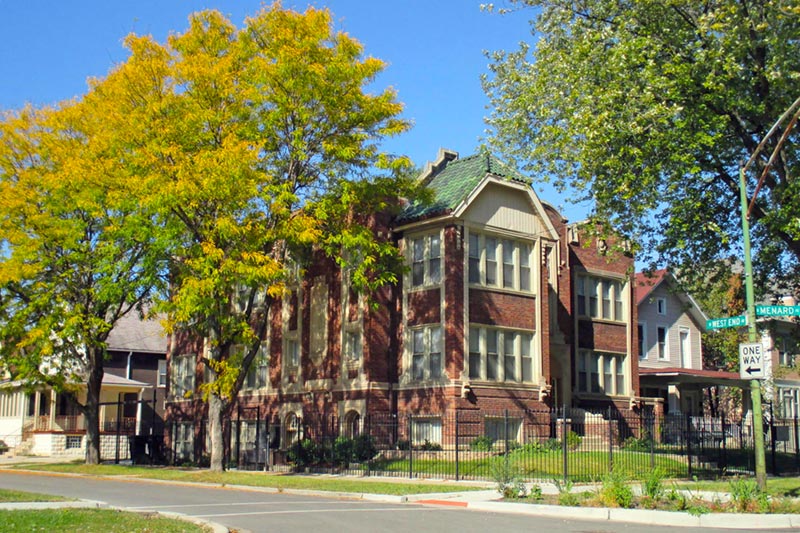Austin on the Rise: Major Development Coming to West Side Neighborhood
Once a suburb, Austin is now the largest Chicago neighborhood. Located on the West Side, Austin has been attracting new investment. Earlier this year, Wells Fargo committed $600,000 to the neighborhood through the United Way of Metro Chicago Neighborhood Network Initiative.
Now, neighborhood stakeholders have put together a revitalization plan. Here’s a look at the changes coming to the neighborhood and what they could mean for home prices.
A Five-Year Revitalization Plan

More than 400 people put their heads together to create the Austin Quality-of-Life Plan, according to Block Club Chicago. Over 20 months, a group called Austin Coming Together led the creation of a five-year revitalization and development plant for the neighborhood.
The new plan, dubbed the Quality-of-Life Plan, will be executed with support from the Local Initiatives Support Corporation (LISC). LISC has helped implement 24 other similar projects across other Chicago neighborhoods, according to the Austin Coming Together website.
“By bringing together stakeholders, residents and civic leaders, communities can define a vision for themselves in their own neighborhood, and feel empowered to take ownership over their futures,” said Jake Ament, director of LISC Chicago’s Neighborhood Network, according to the LISC website.
The plan has several goals, outlined in the comprehensive Quality-of-Life Plan report, including: economic revitalization in the neighborhood, neighborhood safety, a strong education system, a strong real estate market with affordable housing, and “community spirit.”
The entire plan is supported by specific strategies paired with partners and potential resources.
The neighborhood’s Chicago Avenue Corridor figures prominently in the plan as a potential business hub.
The Quality-of-Life Plan states:
“Chicago Avenue is one of Austin’s primary thoroughfares that can once again become a main shopping district in our community and a draw for residents and visitors. Streetscape enhancements and other public and private investments can develop a vibrant, sustainable and safe business corridor.”
The intersection of Madison Street and Central Avenue is another key area included in the plan.
“Madison and Central is one of the most important intersections of Austin. The architecture and history of Madison Street make the site a gateway to Chicago, and Central Avenue is a spine that connects the many smaller neighborhoods that compose Austin.”
The redevelopment of the Emmet School site is one of the proposed projects for the intersection. The Quality-of-Life Plan proposes investing in community resources, like a new Manufacturing Training Center, for the site.
Home Prices in a Changing Neighborhood

The median home sale price in Austin is in the mid $100s with current prices listed on Neighborhoods.com ranging from below $100,000 to the low $300s. But those numbers could be on the rise as the neighborhood draws more attention and moves forward with its Quality-of-Life Plan.
Austin has experienced disinvestment, but now, home prices are beginning to rise in the neighborhood. According to The Institute for Housing Studies at DePaul University, the price of one-to-four-unit buildings increased 21.6 percent from 2012 to 2017 in Austin, as well as East Garfield Park and South Lawndale.
While increasing home prices is a sign of neighborhood revitalization, it comes with a question of what it means for long-time residents.
“The market is moving in those neighborhoods. There hasn’t been a great set of solutions to prevent displacement and dislocation … to slow down change and encourage neighborhoods to be inclusive,” Geoff Smith, executive director of the Institute for Housing Studies at DePaul University, told the Chicago Tribune.
The Quality-of-Life Plan includes strategies to power the neighborhood’s real estate market, but the plan’s stakeholders are conscious of what that could mean for current residents. The plan aims to improve the market while ensuring Austin residents benefit.
The plan’s goals include reducing the number of vacant properties, increasing homeownership among Austin residents, encouraging community developers to build affordable housing, and lowering the number of foreclosures and property tax sales.
The plan does not yet offer any price estimates, according to the Chicago Sun-Times. Earlier this year, Austin Coming Together did receive a $1 million grant from the MacArthur Foundation.

